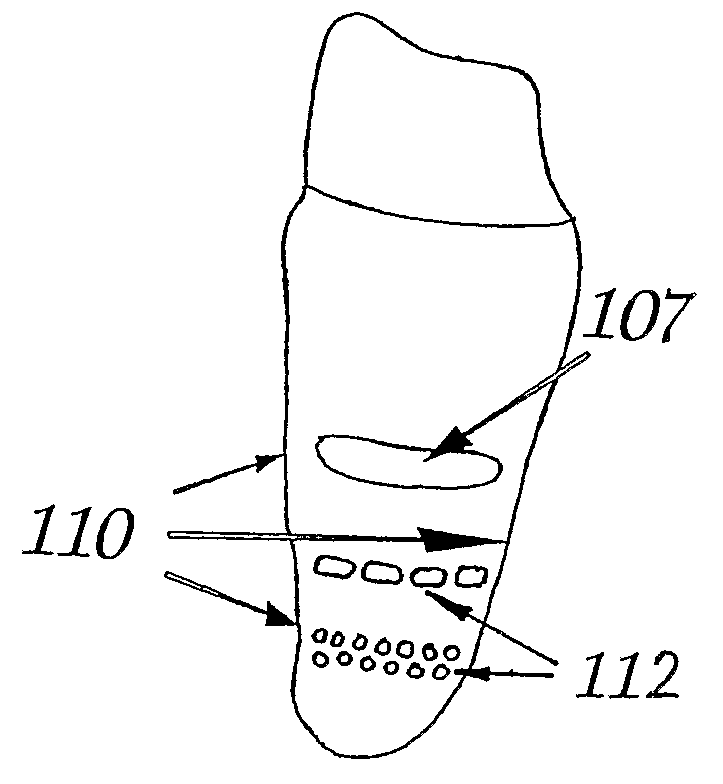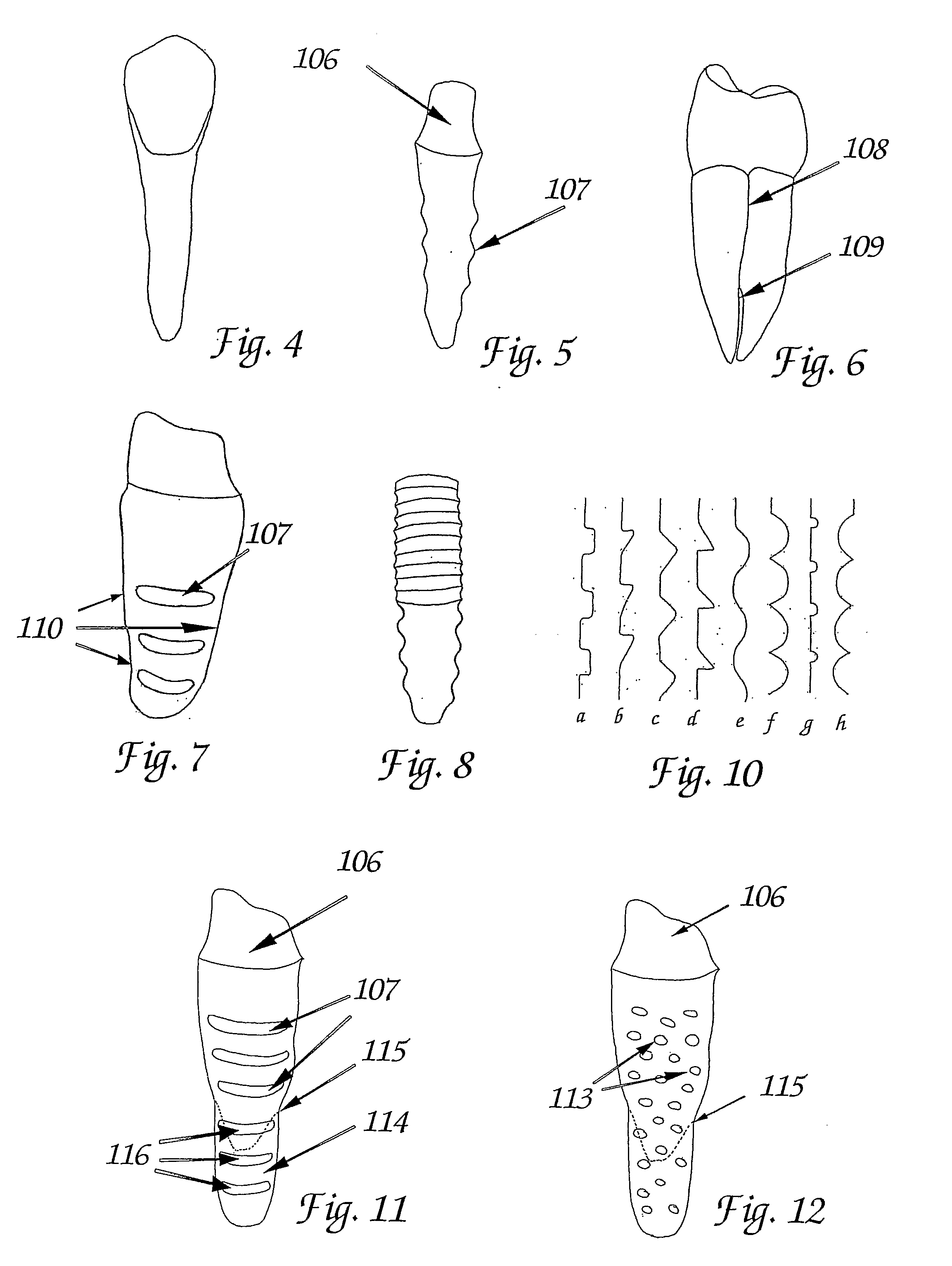Tooth Implant
a tooth implant and implant technology, applied in dental implants, dental surgery, medical science, etc., can solve the problems of inability to achieve primary stability and inability to work with preformed rotationally symmetric implants
- Summary
- Abstract
- Description
- Claims
- Application Information
AI Technical Summary
Benefits of technology
Problems solved by technology
Method used
Image
Examples
Embodiment Construction
[0012]The aim of the invention is the production of an individual non rotation-symmetric implant by copying the original tooth or an impression of the tooth socket and modifying the implant surface with protruding macro retentions, causing only minimal trauma to the alveolar bone and providing a reproducible and shorter healing period.
[0013]For that reason macro retentions must be restricted to special regions to allow for a non-traumatic osseointegration by strictly respecting the strongly variable quantity and / or quality of the surrounding alveolar bone next to the implant surface. It is important to know that the anatomy of the tooth socket consists of thin layers of cortical bone on the inner and outer side of the alveolar ridge and mainly spongy bone between the roots and around the tip of the roots. Cortical bone covering the root is very thin with no or few blood vessel and prone to fracture and pressure induced resorption. In contrast, spongy bone has an excellent blood supp...
PUM
 Login to View More
Login to View More Abstract
Description
Claims
Application Information
 Login to View More
Login to View More - R&D
- Intellectual Property
- Life Sciences
- Materials
- Tech Scout
- Unparalleled Data Quality
- Higher Quality Content
- 60% Fewer Hallucinations
Browse by: Latest US Patents, China's latest patents, Technical Efficacy Thesaurus, Application Domain, Technology Topic, Popular Technical Reports.
© 2025 PatSnap. All rights reserved.Legal|Privacy policy|Modern Slavery Act Transparency Statement|Sitemap|About US| Contact US: help@patsnap.com



